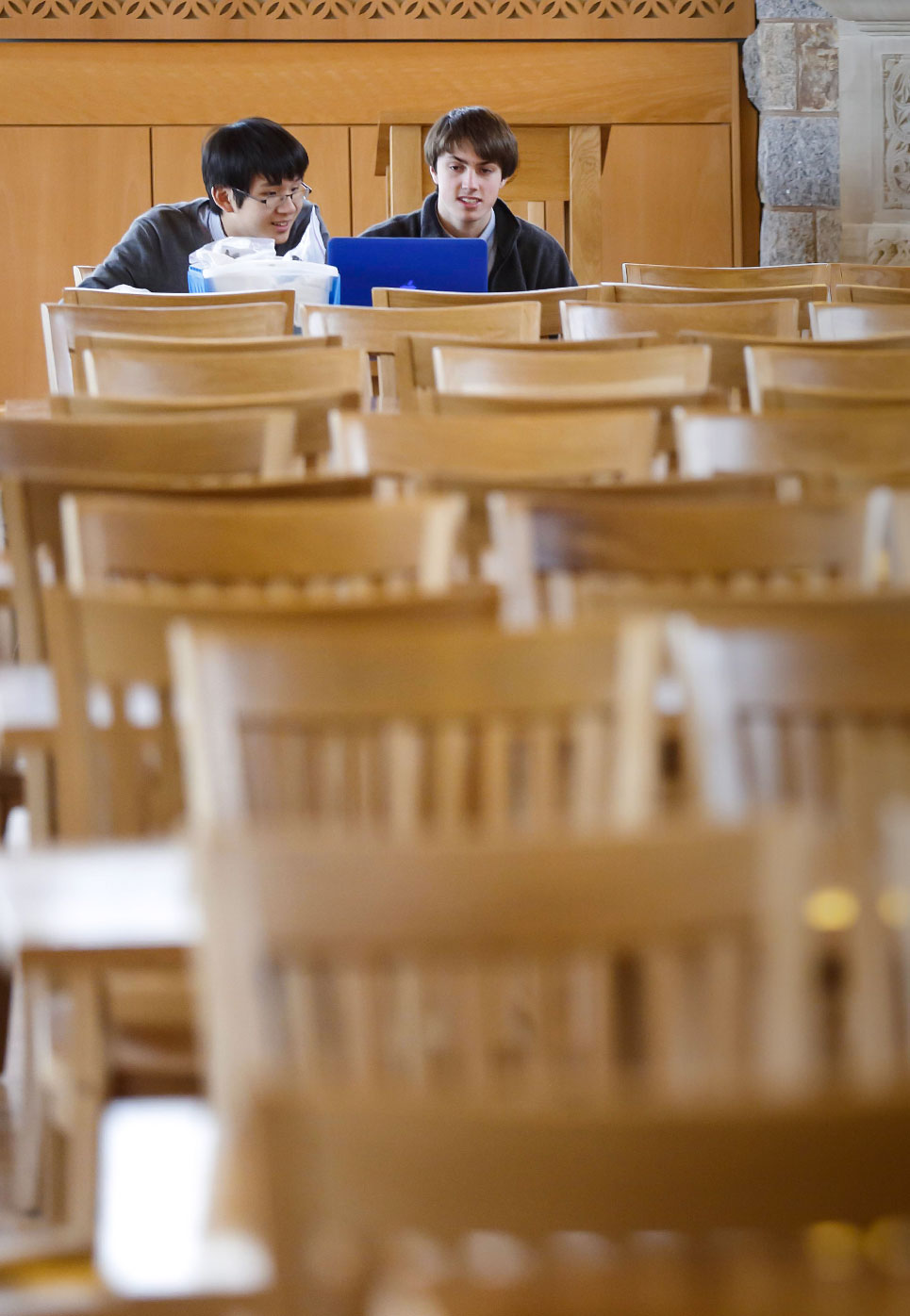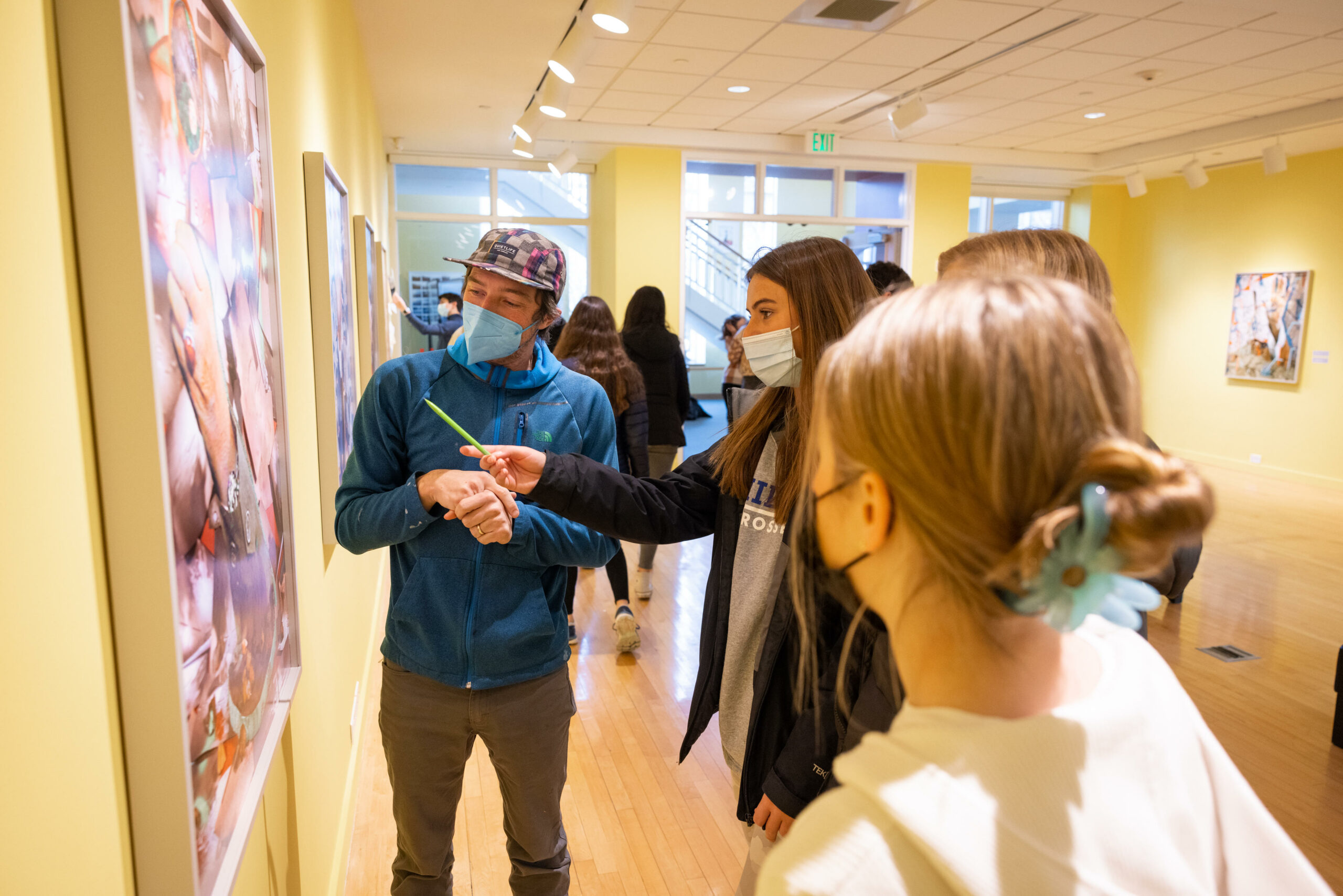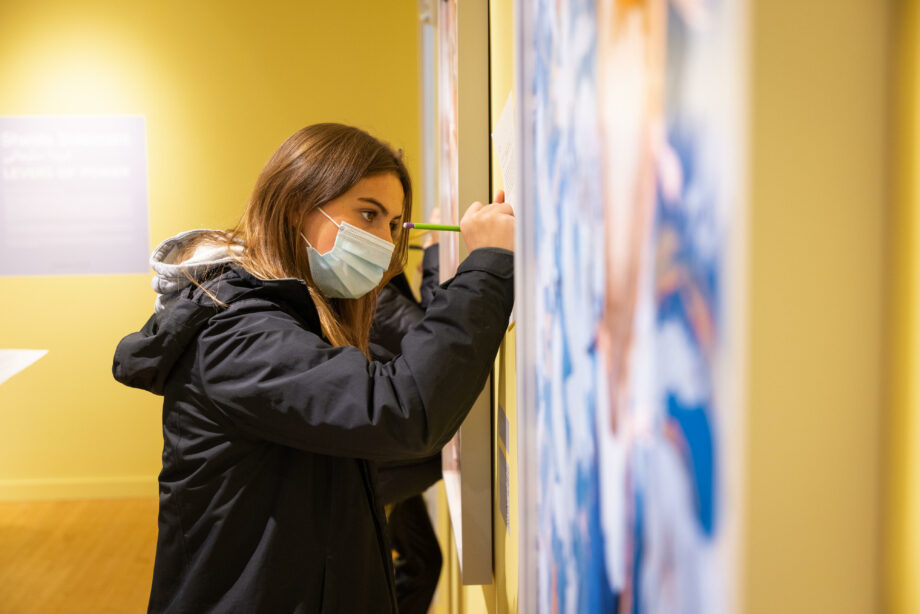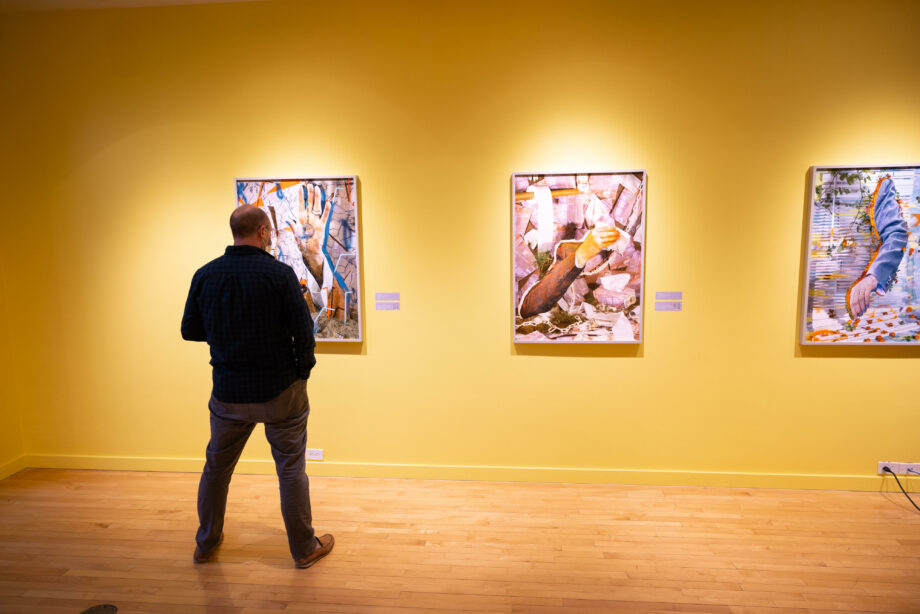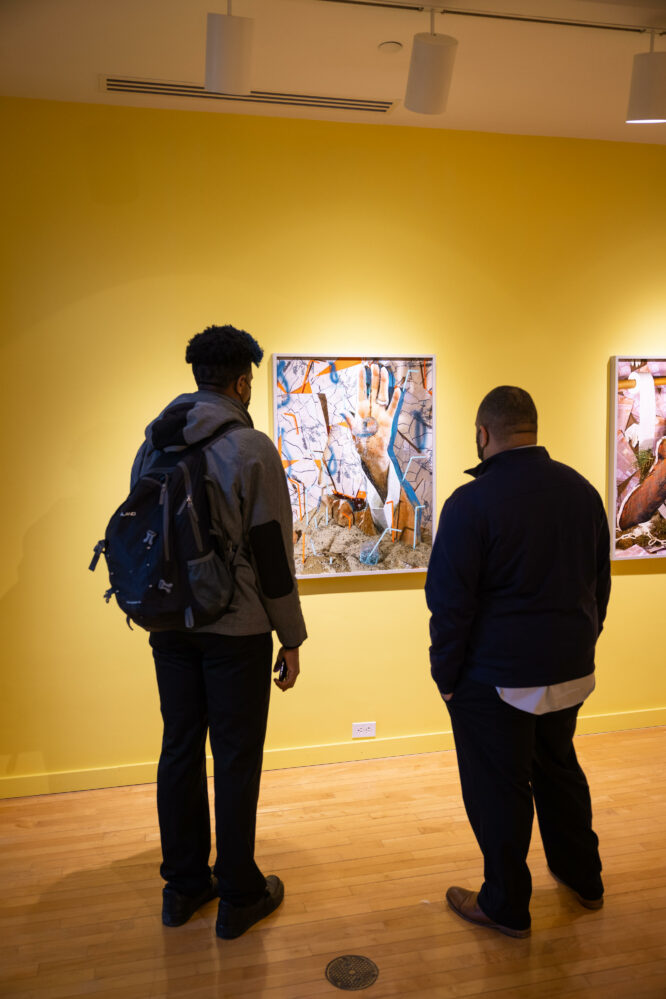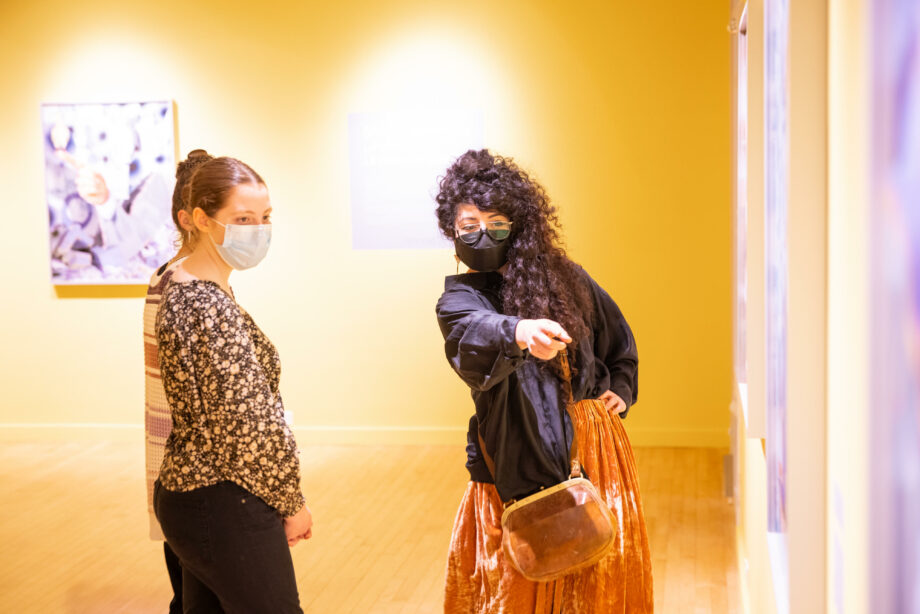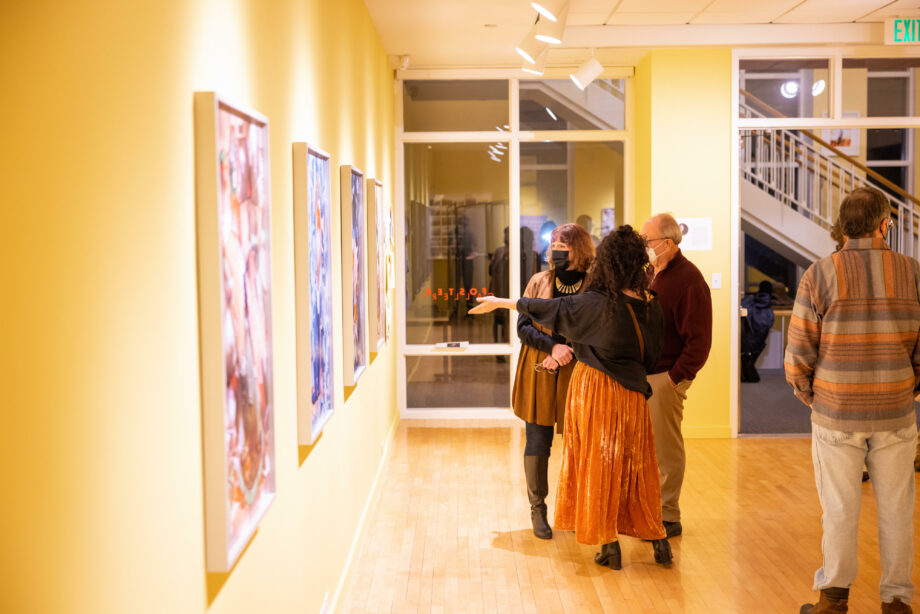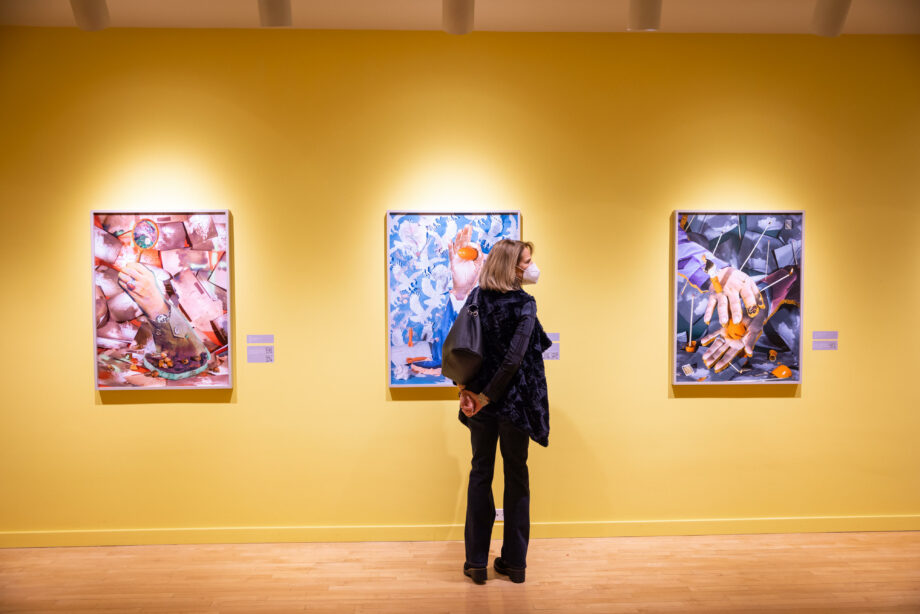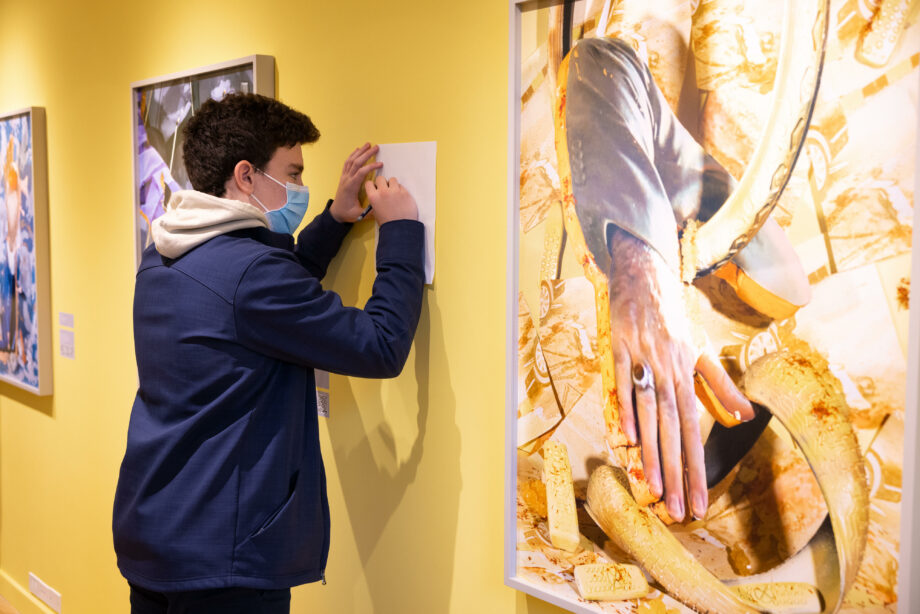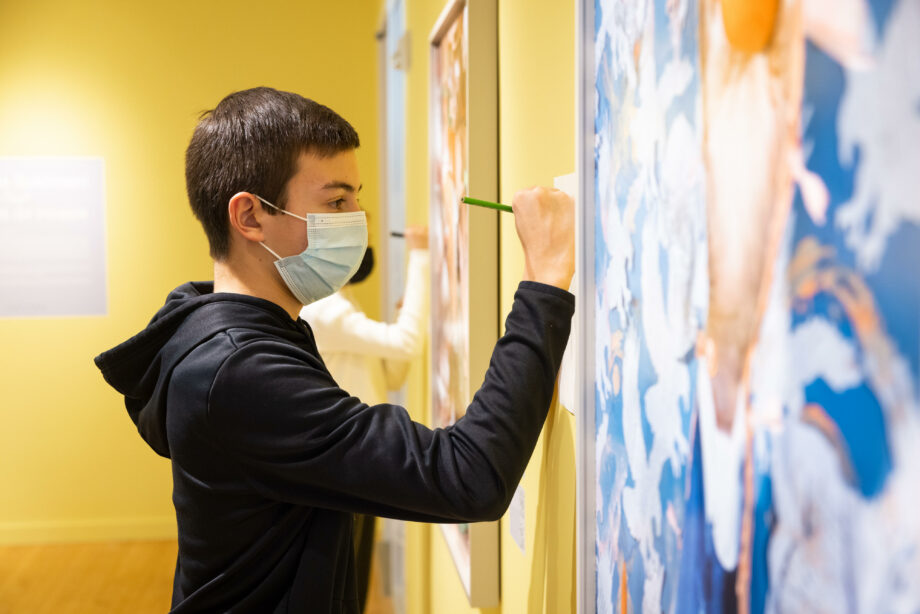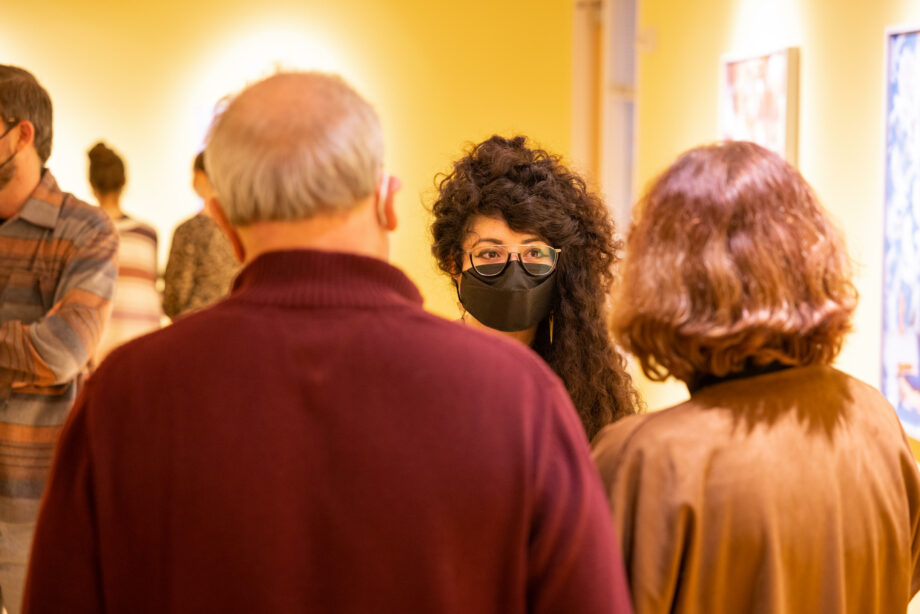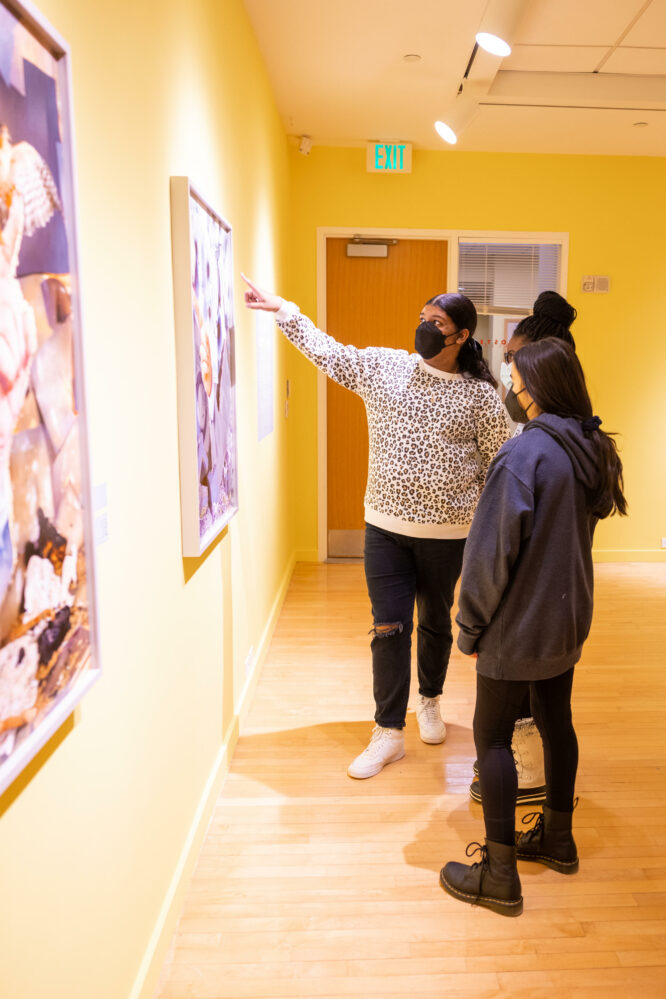Foster Gallery’s most recent show, Sheida Soleimani’s “Levers of Power,” offered a wide range of impactful interdisciplinary opportunities for Nobles students. Soleimani, who is a professor at Brandeis University and a research fellow at Brown University, has had over 30 solo exhibitions in the last five years and is represented by galleries in New York, Brussels and London. The daughter of political refugees who were persecuted by the Iranian government in the early 1980s, her work is a blend of sculpture, collage and photography and reflects her personal critique of the social and political events in historical and contemporary Iran.
The entire Nobles community, including classes and other groups, was invited to attend the Zoom discussions with Soleimani in Foster Gallery, which began with students viewing the images on their own. Following that quiet reflection, members of the art department introduced Soleimani and her work and then gave students the opportunity to engage in discussion with the artist.
Soleimani explained that her work stems from her personal experiences as a child growing up in Iran and hearing her parents’ stories of persecution, escape and imprisonment. In response to one student’s question about the influence of her family’s experience on her work, Soleimani recalled memories of her mother drawing her pictures at bedtime—not pictures of sheep jumping over fences, but of her experiences in solitary confinement when imprisoned after being caught at the border. “I think it’s important, especially in the art world,” said Soleimani, “to challenge audiences that are so used to seeing beautiful, placid-like images and to get them to think about things that are happening in the world in a way that maybe they’re not used to seeing.”
Each image in “Levers of Power” depicts the gesturing arm of a politician, removed from context and placed among other objects, then photographed together. In manipulating the images of the gesturing arms, Soleimani aims to consider the role of body language in popular media and consider the meaning behind these gestures of political power. Soleimani also uses vivid colors—with careful intentionality—in each piece.
While Soleimani’s work is very complex, its relevance to a variety of Nobles classes made for an impactful experience for students. Adjacent to each piece of artwork was a QR code, which viewers could scan to learn more about the socio-political context for that particular image after processing the image on their own. Students in English IV, who had just completed a unit on Marjane Satrapi’s Persepolis, were able to see another perspective on Iranian history and culture through another medium and perspective. They journaled about their responses to the art, answered guided questions, and worked to create projects of their own that mirrored Soleimani’s process.
Visual arts faculty member Betsy VanOot said that “one of the most powerful components of exhibits in Foster Gallery is the opportunity to understand the work on the walls not just as an end product, but as part of an artist’s process.” VanOot also described the relatability and impact of Soleimani’s show in particular, adding, “Sheida’s work is so visually compelling that it would be easy to let it speak for itself, but when students were able to engage with her, the conceptual framework behind the content became more powerful—and more accessible—than the images. Sheida’s generosity and openness dissolved the barrier between artist and student, and the kinds of challenging questions she posed to the students created a sense of mutual respect. Shows this rich in context and content, and artists like Sheida who take the role of engaging with students so seriously, can create a remarkable impact on kids. This experience will resonate.”

